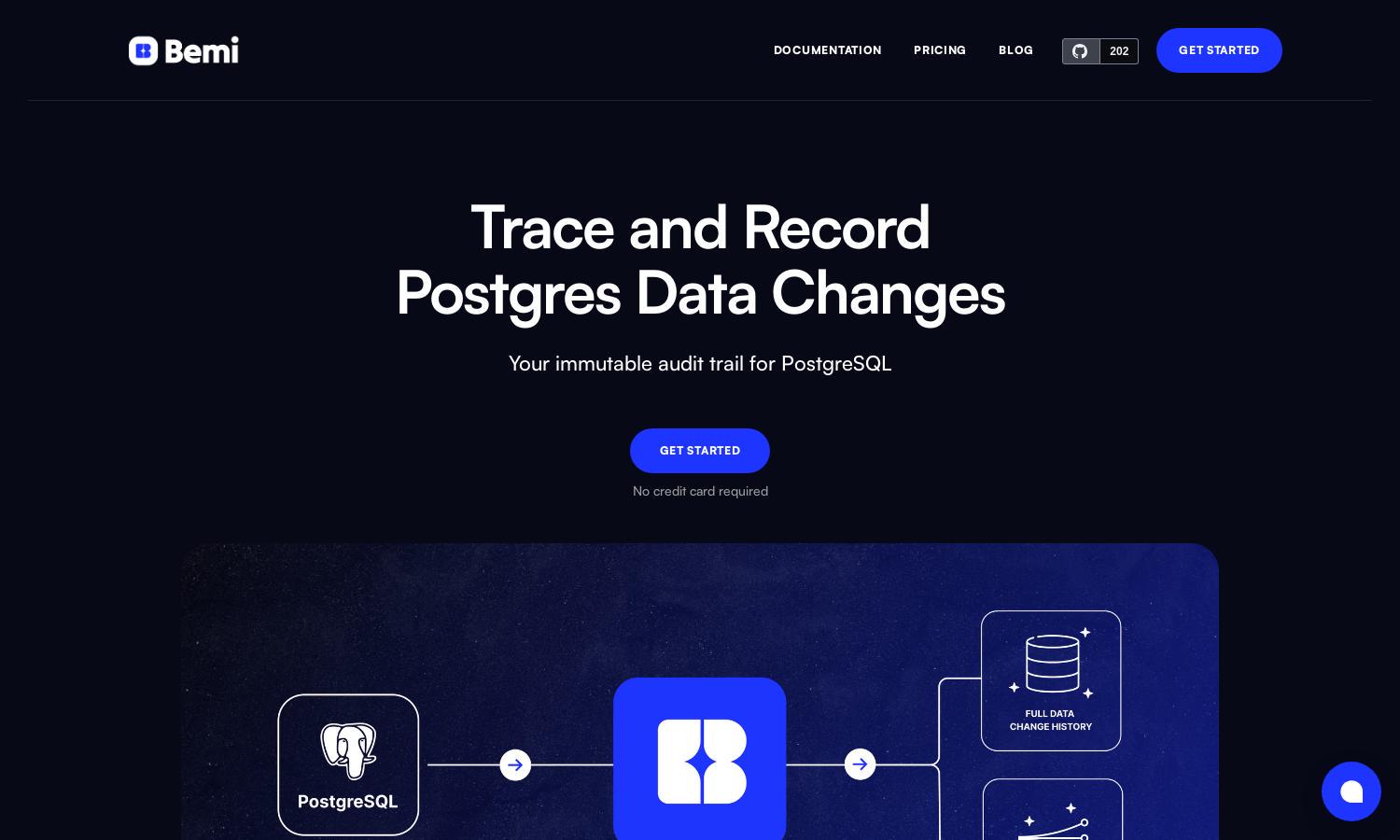Bemi

About Bemi
Bemi is designed for businesses seeking an effortless solution for PostgreSQL data change tracking. With its unique ability to provide automatic audit trails, Bemi enhances data integrity and compliance. Users benefit from seamless integration that eliminates manual tracking efforts, making data management efficient.
Bemi offers a free trial with no credit card required, and flexible pricing plans tailored to various business needs. Each tier includes comprehensive features for data tracking and audit trails, enhancing value through upgrades that ensure robust security and reliability for database management.
Bemi's user interface boasts a clean, intuitive layout that enhances the browsing experience. With user-friendly features and responsive design, navigating through data changes and audit logs is seamless. This enables users to focus on a streamlined workflow while efficiently managing PostgreSQL data.
How Bemi works
Users start by connecting Bemi to their PostgreSQL database, which requires no write permissions and takes only a few clicks. Once integrated, data changes are captured and stored automatically, enabling users to access a comprehensive audit trail. The platform's ease of use ensures that teams can confidently track changes without disruption to their core business functions.
Key Features for Bemi
Automatic Audit Trail
Bemi's automatic audit trail captures and records every PostgreSQL data change, ensuring reliability and accuracy. By seamlessly integrating with existing databases, Bemi provides users the ability to maintain comprehensive records of all changes, simplifying compliance and data management.
Data Security
Bemi prioritizes security, employing military-grade encryption for data at rest and in transit. This robust security model ensures that all credentials are protected, giving users peace of mind that their data is securely managed and isolated from unauthorized access.
Contextualized Data Changes
Bemi enhances data tracking by automatically enriching low-level data changes with contextual information. Users can specify the context of each change by detailing the API endpoint, user identity, and modifications, providing a clear understanding of data activities within their applications.
You may also like:








